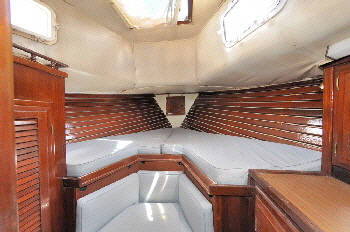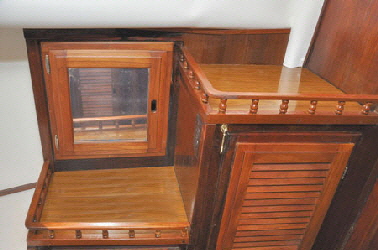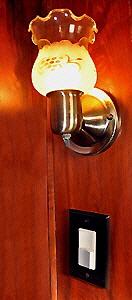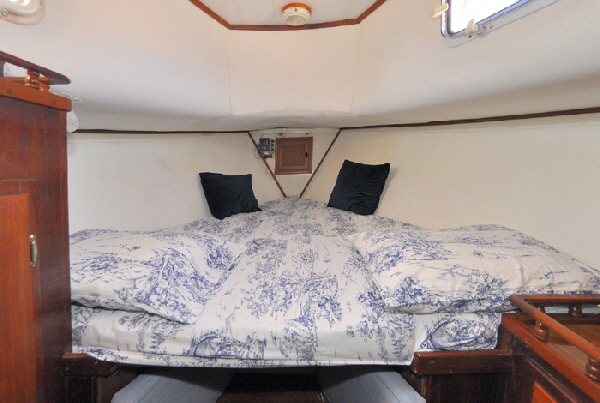
 The original teak slats were removed because they were extremely difficult to clean behind and harbingers for dust and mildew. These were replaced with easy to clean hygienic plastic sheeting. An immediate improvement was to make the cabin appear larger.
The original teak slats were removed because they were extremely difficult to clean behind and harbingers for dust and mildew. These were replaced with easy to clean hygienic plastic sheeting. An immediate improvement was to make the cabin appear larger.
Ceilings are tongue and grooved plastic boards that are used throughout the rest of the boat. headliner. An important benefit, is the rot and mildew free lifetime guarantee and the ability to wash it with soap and water.  The added thickness gave better thermal insulation from the hot deck compared to thin vinyl.
The added thickness gave better thermal insulation from the hot deck compared to thin vinyl.
Extra 12-volt dome lights along with 120-volt sconce lights into the boats 120 volt circuit, have double switches mounted near the door. The top switch to the sconces and the bottom to the dome lights. This is a much more practical method than groping in the dark for the tiny overhead dome light switches.
There are two hanging lockers in this cabin, one each side .
